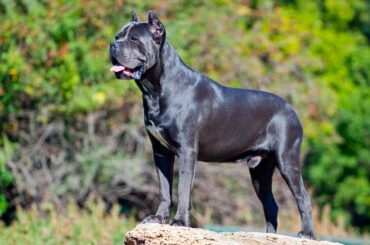A medium-sized gundog, the Nova Scotia Duck Tolling Retriever is bred primarily for hunting. They originated in Yarmouth County, Nova Scotia, Canada. It is sometimes referred to as a “toller”. The name “toller” comes from their ability to lure waterfowl within gunshot range. They are the smallest of the retrievers.
The Nova Scotia Duck Tolling Retriever is a dog that was originally bred in the Acadian community of Little River Harbour, Nova Scotia Duck Tolling Retriever, around the beginning of the 19th century. The toller was originally referred to as the Little River Duck Dog before being officially recognized by the Canadian Kennel Club in 1945 as a purebred dog. The toller is a mixture of retrievers, spaniels, setters, and a farm collie.

In the seventeenth century, Europeans used dogs to draw ducks into nets. This was done by having the dog chase sticks along the shore and sometimes disappear from sight, which drew in curious ducks. Dogs were brought over to America with European settlers.
The name “toller” comes from their ability to entice or lure waterfowl within gunshot range, called “tolling.” The hunter stays hidden in a blind and sends the dog out to romp and plays near the water, usually by tossing a ball or stick to be retrieved. Tollers are suited for retrieving in cold water due to their coat nature. The dog is similar to that of a fox in appearance.
Table of Contents
Physical Appearance
The Nova Scotia Duck Tolling Retriever is one of the youngest dog breeds and it originated in Newfoundland, Canada. The breed was used to hunt waterfowl that migrated through the area. They are athletic, muscular, compact, and medium to heavy boned. Their chest is deep and they have webbed feet. They are a balanced and powerful breed that should be of a moderate build. They range in height from 43–53 cm at the wither and weigh 14–23 kg, with females being slightly shorter and lighter. Tollers are medium-sized breed dogs.

The head of a toller looks like a fox’s head. The ears are triangular and set high and well back on the skull. The body is compact and rounded, with medium-sized bones in relation to the dog’s overall size. The coat is short, dense, and soft with a slight wave. Eyes are set well apart, almond-shaped, and medium-sized. They are amber to dark brown in colour with white markings at the tip of the tail, feet, and chest.
The Toller can come in any form of colour ranging from red to a golden red to dark coppery red with lighter featherings on the underside of its tail, pantaloons, and body. The lighter shades of golden red are deeply pigmented and rich in colour. The Toller has a water-repellent double coat of medium length with softness and a dense undercoat.
The coat may be slightly wavy but is otherwise straight. Some winter coats form a long loose curl at the throat and feathers are soft and moderate in length. The tail is well feathered and held jauntily when the dog is excited or moving. The hair on the muzzle is short and fine; seasonal shedding is to be expected.
Behavior
Nova Scotia Duck Tolling Retrievers are known to be energetic, curious, alert, and outgoing dogs. They love people, especially children. They make good family pets but require a lot of attention to stay happy. They can become destructive if they get bored.

Training and caring
Since Nova Scotia Duck Tolling Retrievers have a medium to high energy level and are not generally content unless they are able to engage in some physical exercise, daily basis exercise is recommended for this breed. It is important that their training be fun, so short, productive sessions work best.
Nova Scotia Duck Tolling Retriever are social dogs that enjoy the companionship of their family. They are energetic and outgoing around their owners, but they are very cautious around strangers. It is important for Tollers to be exposed to new people, locations, smells, and sights in order for them to reach their full potential as happy dogs. Early socialization helps in the later future of the dog.
Tollers are a type of dog that requires weekly brushing to keep their coat looking clean and well-groomed. During shedding season, daily brushing should be performed. Pay special attention to the coat around and under the ears, as in these areas, it is finer and more prone to knotting.
Health
Nova Scotia Duck Tolling retrievers are a healthy breed but suffer from certain health challenges. Genetic disorders are known to occur in the breed. Eye problems and hip dysplasia can affect them as well as immune-mediated rheumatic disease and steroid-responsive meningitis–arthritis. Life expectancy is between 12-14 years,




